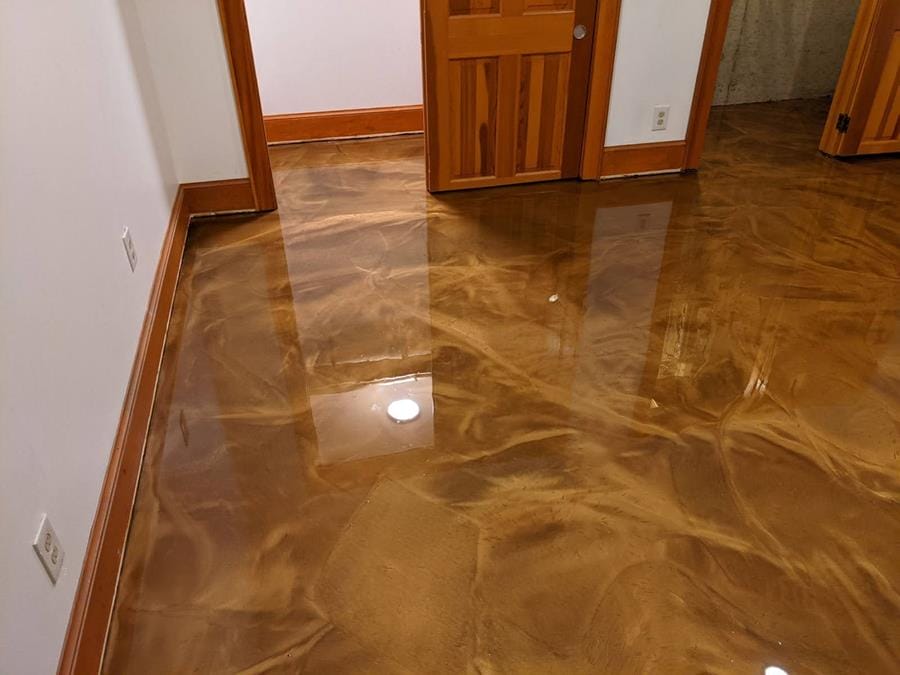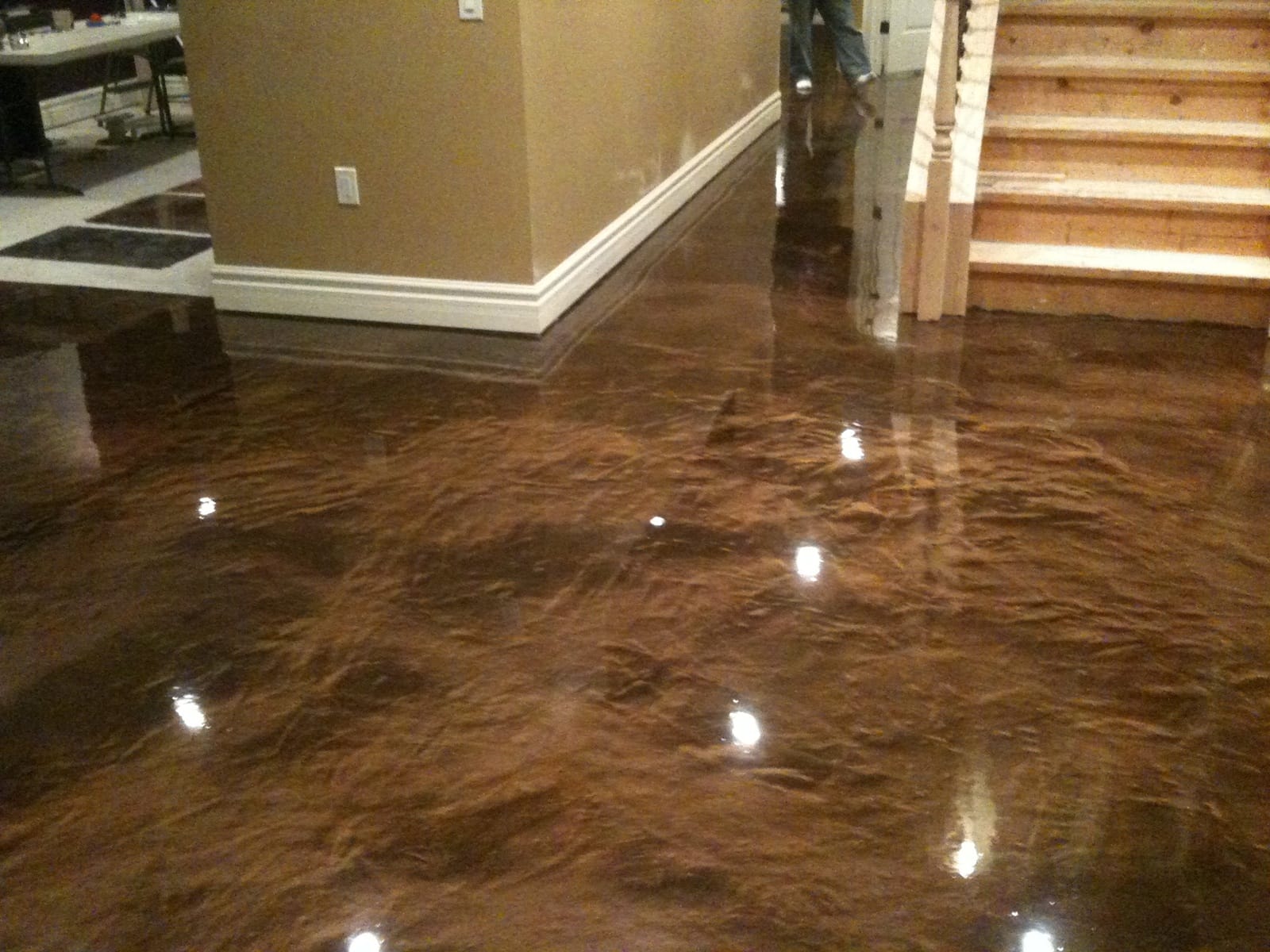Transforming your basement from a dull, neglected space into a vibrant, functional area can be a rewarding home improvement project. At the heart of this transformation is the choice of basement floor paint and epoxy coatings. Whether you are looking to enhance the aesthetic appeal or increase the durability of your concrete surfaces, selecting the right type of paint or coating is crucial. This article explores the best options for basement floor painting, provides a step-by-step guide on how to apply them, and offers tips on maintenance to ensure a lasting finish.

What Are the Best Types of Paint for Your Basement Floor?
How to Choose the Right Concrete Floor Paint
Choosing the right concrete floor paint for your basement involves considering factors like durability, moisture resistance, and ease of application. Concrete surfaces in basements are prone to moisture and temperature fluctuations, which can impact the adhesion and longevity of the paint. The best concrete floor paint should be specifically formulated for masonry surfaces and should ideally combine paint and primer for optimal adhesion and coverage. Latex concrete floor paint is a popular choice due to its ease of use and ability to withstand the typical wear and tear of basement environments. However, for areas subject to higher traffic, more robust options like epoxy paint provide enhanced resilience.
Why Epoxy Coating is a Popular Choice for Basement Floors
Epoxy coating has emerged as a favored option for basement floors due to its superior durability and glossy finish. Unlike traditional paint, epoxy forms a hard, impact-resistant surface that can withstand heavy foot traffic and resist stains and spills. This makes it an ideal choice for homeowners looking to create a polished, professional look in their basements. The seamless finish of an epoxy floor not only enhances the aesthetic appeal but also makes cleaning and maintenance much easier compared to other types of coatings.
Comparing Latex and Epoxy for Concrete Basement Applications
When comparing latex and epoxy for concrete basement applications, it is important to weigh the advantages and limitations of each. Latex concrete floor paint is easier to apply and more forgiving, making it suitable for DIY projects. It dries faster and comes in a variety of colors, allowing for more design flexibility. On the other hand, epoxy coatings, while requiring more preparation and curing time, offer unmatched durability and a more refined finish. For basements that serve as multifunctional spaces, such as a home gym or workshop, the robustness of an epoxy floor may be more advantageous.
How to Paint Your Basement Floor: A Step-by-Step Guide
Preparing Your Basement Floor for Painting
Preparation is key to a successful basement floor paint job. Start by thoroughly cleaning the surface to remove any dirt, oils, or previous coatings that could impede adhesion. Use a degreaser for tough spots and ensure the floor is completely dry before proceeding. If there are cracks or imperfections, patch them with a concrete sealer or repair compound. For the best results, ensure you follow the manufacturer’s instructions for any products used during this process.
The Importance of Etching Your Concrete Floor
Etching your concrete floor is an essential step to enhance the adhesion of paint or epoxy coatings. This process involves applying an acidic solution to the floor to create a rough surface that allows the paint to bond more effectively. This is particularly important for smooth concrete surfaces, as it prevents peeling and chipping over time. After etching, rinse the floor thoroughly and allow it to dry completely before applying any coatings.
Applying the Floor Paint and Ensuring a Smooth Finish
Once the floor is prepared and dry, you can begin applying the floor paint. Use a roller for large areas and a brush for edges and corners. Apply thin, even coats of paint, allowing each layer to dry according to the manufacturer’s instructions before applying the next. For a durable finish, multiple coats of paint may be necessary. For epoxy coatings, mix the components as directed and apply with care to avoid bubbles or uneven application. A garage floor coating technique can be helpful in achieving a smooth, professional-looking finish.

What Are the Benefits of Using Epoxy Floor Coating?
Durability and Longevity of Epoxy Coatings
One of the primary benefits of using epoxy floor coating is its exceptional durability. Epoxy floors can withstand heavy foot traffic, impact, and even chemical spills, making them ideal for basements that double as workshops or play areas. The longevity of epoxy coatings also means that once applied, they need minimal touch-ups over the years, providing a cost-effective solution in the long run.
Aesthetic Enhancements: Transforming Your Basement
Beyond durability, epoxy coatings offer significant aesthetic enhancements. They come in a variety of finishes, including metallic and high gloss, which can transform a drab basement into a stylish living space. The reflective quality of an epoxy floor can also brighten the room, making it appear larger and more inviting. Customization options such as adding color flakes or decorative patterns further enhance the visual appeal of your basement floor.
Maintenance Tips for Epoxy Coated Basement Floors
Maintaining an epoxy-coated basement floor is straightforward. Regular sweeping and occasional damp mopping are generally sufficient to keep the floor looking pristine. Avoid using harsh chemicals that could damage the surface. In case of spills, clean them promptly to prevent staining. With proper care, an epoxy floor can retain its shine and functionality for many years, making it a smart choice for homeowners seeking low-maintenance flooring solutions.
How to Maintain and Clean Your Painted Basement Floor
Regular Cleaning Tips for Painted Concrete Floors
Regular cleaning is crucial to maintaining the appearance and longevity of painted concrete floors. Routine sweeping or vacuuming can help remove dirt and debris that can scratch the surface. For more thorough cleaning, use a mild detergent mixed with water and a soft mop. Avoid over-saturating the floor with water, as excess moisture can seep into the concrete and cause damage over time.
Dealing with Stains on Your Basement Floor Paint
Stains on your basement floor paint can be a challenge, but they can often be removed with the right approach. For common stains, a gentle scrubbing with a soft brush and a mixture of baking soda and water can be effective. For tougher stains, such as oil or grease, a commercial concrete stain remover may be necessary. It’s important to address stains promptly to prevent them from setting into the paint.
Long-term Maintenance Strategies for Coated Floors
Long-term maintenance of coated floors involves regular inspection and repair of any damage. Small chips or cracks in the coating should be addressed immediately to prevent them from worsening. Reapplying a concrete sealer every few years can also help preserve the integrity of the floor. For epoxy floors, consider applying a fresh topcoat every few years to maintain the glossy finish and protect against wear.
What Are Common Issues When Painting a Basement Floor and How to Fix Them?
Understanding and Preventing Moisture Problems
Moisture is a common challenge when painting a basement floor. High humidity or water seepage can cause paint to bubble or peel. To prevent moisture-related issues, it is crucial to assess and address any underlying water problems before painting. This may involve sealing cracks in the foundation or installing a dehumidifier to keep the space dry.
Addressing Peeling and Chipping Paint
Peeling and chipping paint can occur if the surface was not properly prepared or if moisture is present. To fix these issues, remove the damaged paint by scraping and sanding, then clean and dry the area thoroughly. Reapply a high-quality paint or epoxy coating, ensuring that the floor is adequately etched and primed to promote strong adhesion.
Resolving Uneven Paint Application on Concrete Floors
Uneven paint application can result from improper technique or inconsistent surface preparation. To correct this, sand down the uneven areas to create a smooth surface. Reapply the paint in thin, even coats, allowing each layer to dry completely before adding the next. Using a high-quality roller or sprayer can also help achieve a consistent finish across the entire floor.